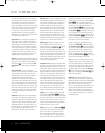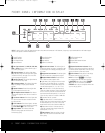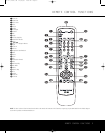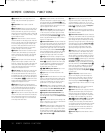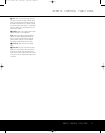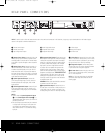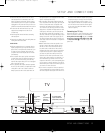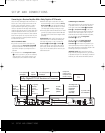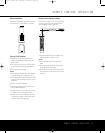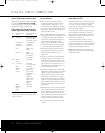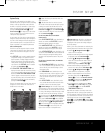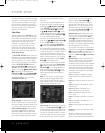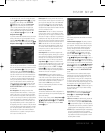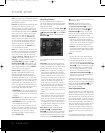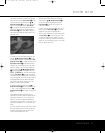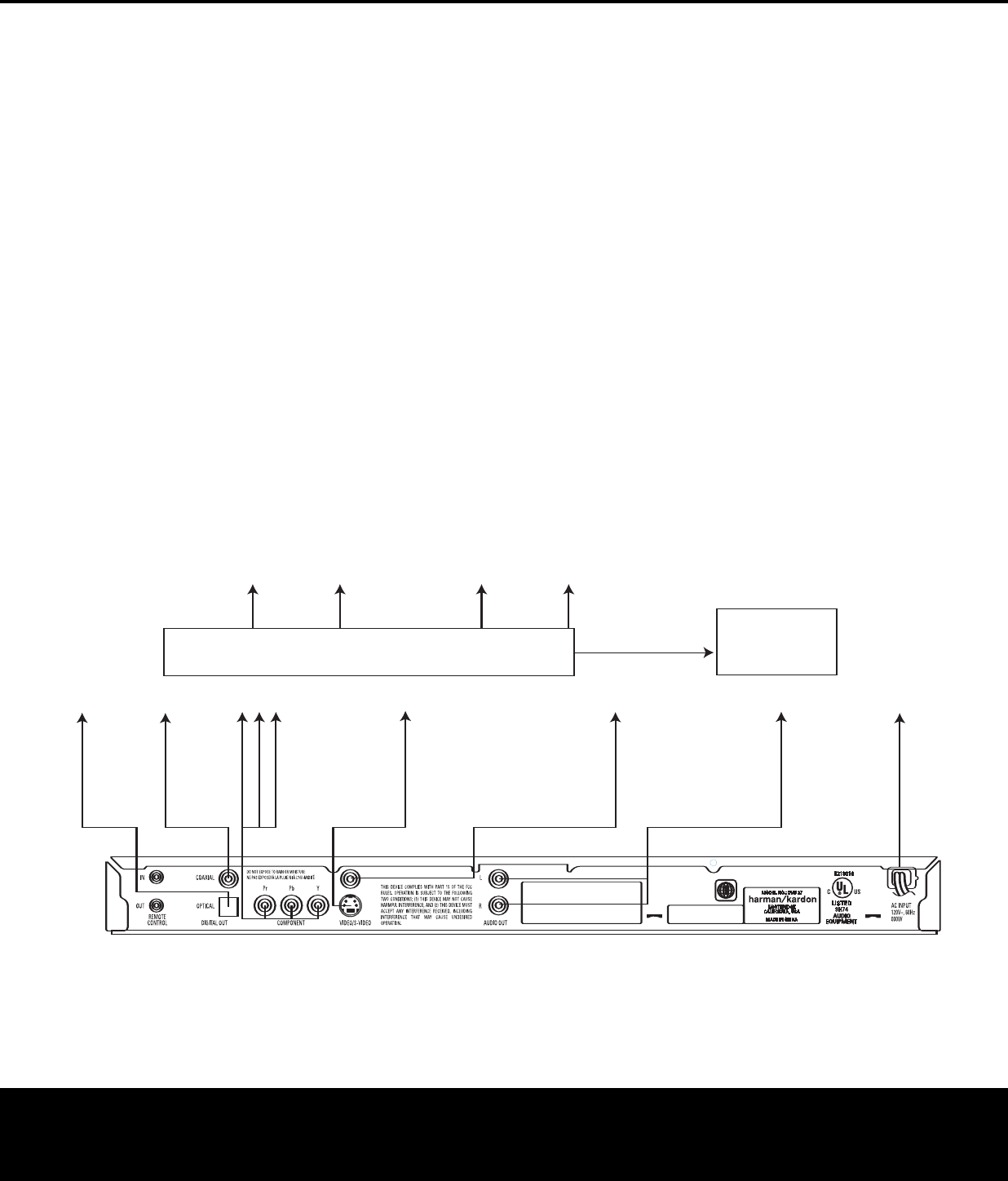
14
SETUP AND CONNECTIONS
SETUP AND CONNECTIONS
One of the major advantages of the DVD format is its
ability to use a variety of digital audio formats for the
ultimate in sonic performance. However, in order to
e
njoy the benefits of digital audio, you must use a
receiver or processor that has digital audio decoding
capabilities and make an optical or coaxial digital audio
connection between the DVD 27 and your home the-
ater system. This simple connection is made as shown
below with an optional coax or optical cable. Only one
of these connections is required, and both should not
be made at the same time.
N
OTES FOR ANALOG AUDIO:
•If you wish to use the DVD 27 as the input for a
multiroom system, the
Analog Audio Outputs •
should be connected to the standard analog left/
right DVD or CD inputs on your digital receiver or
processor.
• The connection from the
Analog Audio Outputs
• to the TV is optional. If you plan on occasionally
using your DVD 27 alone, without turning on your
complete system, this connection must be made.
• When the audio signal is to be fed to an analog
receiver rather than to the TV, connect the
Analog
Audio Outputs
• to any analog audio inputs on
y
our receiver or processor. The DVD 27 will “down-
mix” Dolby Digital recordings to Dolby Pro Logic.
• The analog audio connection should also be made if
you wish to play high-resolution 96kHz PCM audio
discs where your receiver does not support 96kHz
processing.
NOTE ON VIDEO: With multiple video sources, your
a
udio/video receiver can be used for selecting the
video signal and routing it to the TV. Connect the
Component ∞ Composite § or S-Video ¶
output of the DVD 27 to the correct video input on
your receiver, and the video outputs of the receiver
to your TV. For more details, see the manual for your
audio/video receiver.
Connecting to a Receiver
When using the DVD 27 with an audio/video receiver
or processor, connect it as follows. First, make one
o
f the video connections (
S
-video
ç, C
omposite
Video
∫ or Component Video ∂) to the video
input jacks on the A/V receiver, and then connect the
receiver’s video monitor output to the TV. If you will
sometimes use the TV without the audio component,
y
ou may optionally make the
A
nalog Audio
Connection
å to the TV.
Second, make either the
Optical Digital Audio
Connection
ƒ or the Coaxial Digital Audio
Connection
é, to the receiver or processor. If your
receiver/processor has multiroom capability, you may
also connect the DVD 27’s analog audio outputs to the
DVD analog audio inputs on the receiver.
IMPORTANT NOTE: Make certain that any device
being connected, including the DVD 27, your receiver
or processor and your
TV or video display, is turned off
whenever you make connections between products.
∂Ƀç∫å
To Y (green)/
Pb (blue)/
Pr (red)
component
video
connectors
To S-video
input
connectors
To coaxial
digital
audio input
connectors
To optical
digital
audio input
connectors
To analog audio
input connectors
(red/white)
on the TV
or receiver
(see note)
To video
input
connectors
(yellow)
To power outlet
(AC 120V/60Hz)
Dolby Digital/DTS A/V Receiver or Processor
Front Speakers
(Left/Right)
Surround Speakers
(Left/Right)
Center
Speaker
Subwoofer
Component,
S-video and/or
Composite video
monitor outputs
TV
Connecting to a Receiver/Amplifier With a Dolby Digital or DTS Decoder
DVD 27 (120V) OM 12/20/05 2:18 PM Page 14



